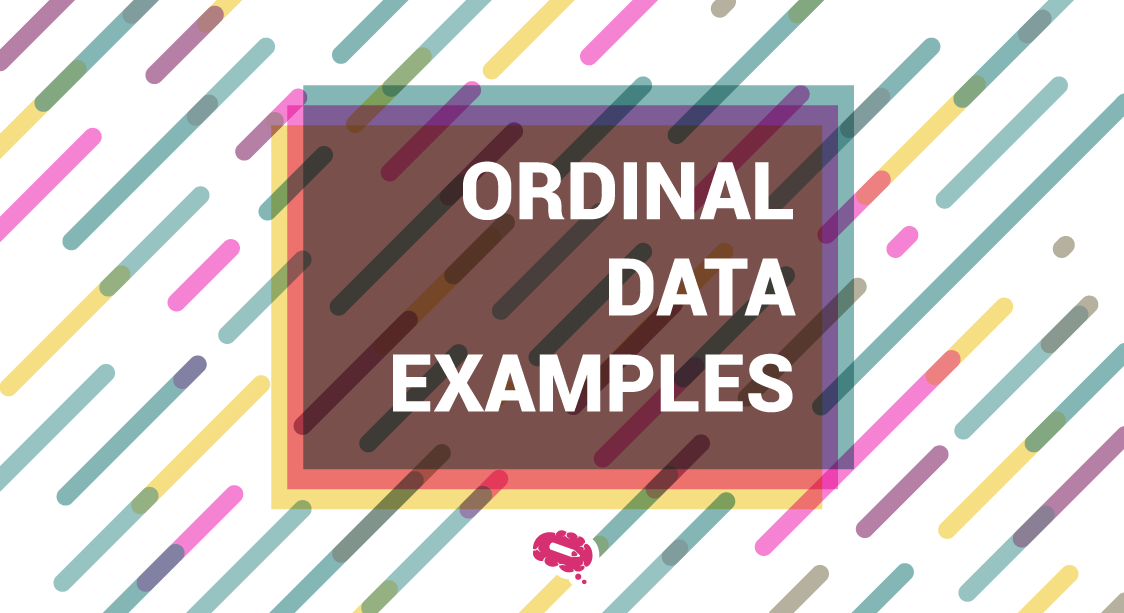In the field of research and data analysis, understanding the different types of data is essential for drawing meaningful conclusions and making informed decisions. One such type is ordinal data, which plays a crucial role in various disciplines, ranging from social sciences to market research. Understanding what ordinal data represents and how it differs from other data types is essential for researchers aiming to extract meaningful insights from their datasets. This article will provide a comprehensive explanation of what ordinal data is and its significance in the field of research.
What is Ordinal Data?
Ordinal data is a type of categorical data in which the categories have a natural order or ranking. This means that the categories are ordered in such a way that they can be ranked or ordered based on their relative value or importance. For example, a survey question that asks respondents to rate their level of agreement on a scale of 1 to 5 is collecting ordinal data, as the responses have a natural order from “strongly disagree” (1) to “strongly agree” (5). Ordinal data examples can be analyzed using statistical methods such as chi-square tests, but some caution is required as the distances between categories may not be equal.
Ordinal data is crucial in scientific research because it enables the classification and comparison of data with a natural order or ranking, which can provide valuable insights into patterns, relationships, and trends within the data. This type of data is frequently used in social science research, such as surveys and questionnaires, where respondents are asked to rate their opinions or experiences on a scale.
Figure: https://www.voxco.com/wp-content/uploads/2021/03/Cover-scale-1536×864.jpg
Characteristics of Ordinal Data
Ordinal data is a type of categorical data that represents a particular order or ranking among its categories. The following are some key characteristics of ordinal data:
Order: The categories in ordinal data have a specific order or ranking, and this order represents the level of agreement, disagreement, or preference. For instance, in a survey asking about the quality of service received, the response options could be “excellent,” “good,” “fair,” or “poor,” which would have a clear order.
Non-numeric: Ordinal data categories are not necessarily represented by numbers, and the categories could be words or symbols. For example, a restaurant rating system might use stars to indicate levels of quality instead of numeric values.
Unequal intervals: The distances between categories are not necessarily equal. For instance, the difference between “strongly agree” and “agree” on a Likert scale may not be the same as the difference between “disagree” and “strongly disagree.”
Limited number of categories: Ordinal data typically has a finite number of categories, which are often predefined by the researcher. For instance, a survey might use a Likert scale with five response options.
Can be treated as numerical data: Sometimes, ordinal data can be treated as numerical data for statistical analysis purposes, but this should be done with caution. Assigning meaningful numerical values to ordinal categories can facilitate analysis and interpretation, but it should not alter the essential nature of the data.
Types of Ordinal Variables
Ordinal variables are variables that can be ranked or ordered based on their values or attributes. There are two types of ordinal variables:
Matched Category
In matched category ordinal variables, there is a natural order in the categories of the variable. This order is defined by the variable itself and the categories are mutually exclusive. For example, in a before-and-after study design, the same group of participants is measured on the same ordinal variable at two different points in time, such as before and after a treatment. The categories in the “before” measurement are matched or paired with the categories in the “after” measurement.
Another example is a study comparing the preferences of couples in a certain aspect, where the preferences of one partner are matched or paired with the preferences of the other partner. Matched categories are often analyzed using non-parametric statistical tests, such as the Wilcoxon signed-rank test or the Friedman test, to compare the differences between the categories within each pair or group.
Unmatched Category
The unmatched category is another type of ordinal variable. Unlike matched categories, unmatched categories do not have a clear relationship or connection between the categories. For example, if you are asking respondents to rate their preferences for different types of music genres, there may not be a clear ordering or relationship between the categories of jazz, country, and rock.
In unmatched categories, the categories may still be ordered based on a respondent’s individual preferences or perceptions, but there is no objective or consistent ordering that applies to all respondents. This can make it more difficult to analyze and interpret the data compared to matched categories, which have a clear and consistent ordering.
Examples of Ordinal Data
Ordinal data examples can be found in many areas of research and in various types of measurements. Some examples of ordinal data include:
Interval Scale
The interval scale is a type of measurement scale that has a numerical value assigned to each category or response, and the differences between the values are meaningful and equal. It is similar to the ratio scale, except it does not have a true zero point.
For example, the Celsius temperature scale is an example of the interval scale. The difference between 10°C and 20°C is the same as the difference between 20°C and 30°C. However, 0°C does not represent a complete absence of temperature but rather a specific point on the scale.
Likert Scale
Likert scale is a common type of ordinal data that uses a set of response options, such as “strongly agree,” “agree,” “neutral,” “disagree,” and “strongly disagree,” to measure attitudes, opinions, or perceptions. Each response is assigned a numerical value, usually ranging from 1 to 5 or 1 to 7, with a higher value indicating a more positive or stronger response. The Likert scale is often used in surveys and questionnaires to collect ordinal data that can be analyzed using specific methods.
How to Analyze Ordinal Data?
There are several methods to analyze ordinal data, including:
Descriptive Statistics: Descriptive statistics are used to summarize and describe the central tendency and distribution of ordinal data. Some commonly used descriptive statistics for ordinal data include the median, mode, and percentiles. Descriptive statistics can help to provide a general overview of the data and identify any potential issues, such as outliers or skewed distributions. However, they do not provide any information about the statistical significance of differences or relationships between groups.
Non-parametric tests: Non-parametric tests are commonly used to analyze ordinal data because they do not require the data to follow a specific distribution, such as a normal distribution, and do not assume that the intervals between the categories are equal. These tests are based on the ranks of the observations rather than their exact values. Non-parametric tests are robust to outliers and are often used when the assumptions of parametric tests are not met. However, they may have less statistical power than parametric tests, especially when the sample size is small.
Ordinal logistic regression: Ordinal logistic regression is a statistical method used to model the relationship between one or more ordinal independent variables and an ordinal dependent variable. This method is useful when you want to determine the factors that influence the outcome of an ordinal variable. Ordinal logistic regression assumes that the categories of the dependent variable are ordered, and that the distance between categories is not necessarily equal. It also assumes that the relationship between the dependent variable and the independent variables is log-linear.
Correspondence analysis: This method is used to explore the relationship between two or more ordinal variables. It helps to identify patterns and relationships between the variables and visualize them in a two-dimensional space. The method involves creating a contingency table that shows the frequencies of each category for each variable. Then, a set of scores is calculated for each category based on the overall distribution of the data. These scores are used to create a two-dimensional plot where each category is represented by a point. The distance between the points indicates the degree of similarity or dissimilarity between the categories.
Structural equation modeling: Structural equation modeling (SEM) is a statistical method used to analyze the relationships between variables and to test complex models. It is a multivariate analysis technique that can handle multiple variables, both observed and latent, and can test causal relationships between variables. When analyzing ordinal data, SEM can be used to test models that include multiple ordinal variables and latent constructs. It can also help to identify and estimate the magnitude of direct and indirect effects of variables on each other.
Inferential Statistics
Inferential statistics is a branch of statistics that involves drawing conclusions and making inferences about a population based on a sample of data. It is a powerful tool that allows researchers to make generalizations, predictions, and hypotheses about a larger group beyond the observed data.
While descriptive statistics summarize and describe data, inferential statistics take it a step further by using probability theory and statistical methods to analyze the sample data and draw conclusions about the population from which the sample was taken. By utilizing inferential statistics, researchers can make predictions, test hypotheses, and make informed decisions based on the findings.
Uses of Ordinal Data
Ordinal data is used in a wide range of applications and is often collected through surveys, questionnaires, and other forms of research. Here are some common uses of ordinal data:
Surveys/Questionnaires
Surveys and questionnaires are a common way to collect ordinal data. For example, a survey might ask respondents to rate their level of agreement with a statement on a scale from “strongly disagree” to “strongly agree.” This type of data can then be used to analyze trends or patterns in the responses.
Research
Ordinal data can also be used in research studies to measure the relationship between different variables. For example, a researcher might use an ordinal scale to measure the severity of a particular symptom in a group of patients with a particular disease. This type of data can then be used to compare the severity of the symptom in different groups of patients or to track changes in the symptom over time.
Customer service
Ordinal data can also be used in customer service to measure customer satisfaction or dissatisfaction. For example, a customer might be asked to rate their experience with a company’s product or service on a scale from “very unsatisfied” to “very satisfied.” This type of data can then be used to identify areas for improvement and to track changes in customer satisfaction over time.
Job applications
Ordinal data can also be used in job applications to measure an applicant’s qualifications or level of experience. For example, an employer might ask job applicants to rate their level of experience in a particular area on a scale from “no experience” to “expert.” This type of data can then be used to compare the qualifications of different job applicants and to select the most qualified candidate for the job.
Difference between Ordinal and Nominal Data
Ordinal and nominal data are two types of categorical data. The main difference between them lies in the level of measurement and the information they convey.
Ordinal data is a type of categorical data where the variables have a natural order or ranking. It is measured at the ordinal level, which means that it has a natural ordering, but the differences between the values cannot be quantified or measured. Examples of ordinal data include rankings, ratings, and Likert scales.
On the other hand, nominal data is also a type of categorical data, but it does not have a natural ordering or ranking. It is measured at the nominal level, which means that the data can only be classified into mutually exclusive categories without any inherent ranking or order. Examples of nominal data include gender, ethnicity, and marital status.
The main difference between ordinal and nominal data is that ordinal data has a natural order or ranking, while nominal data does not. To learn more about the difference between ordinal and nominal data, check this website.
Need a very specific illustration? We’ll design it for you!
Mind the Graph platform offers an extensive library of scientific illustrations and templates with complex scientific concepts and particular images you require. Mind the Graph will work with you to create a high-quality illustration that meets your expectations. This service ensures that you can have the exact visuals you need for your research, presentation, or publication, without the need for specialized design software or skills.

Subscribe to our newsletter
Exclusive high quality content about effective visual
communication in science.





